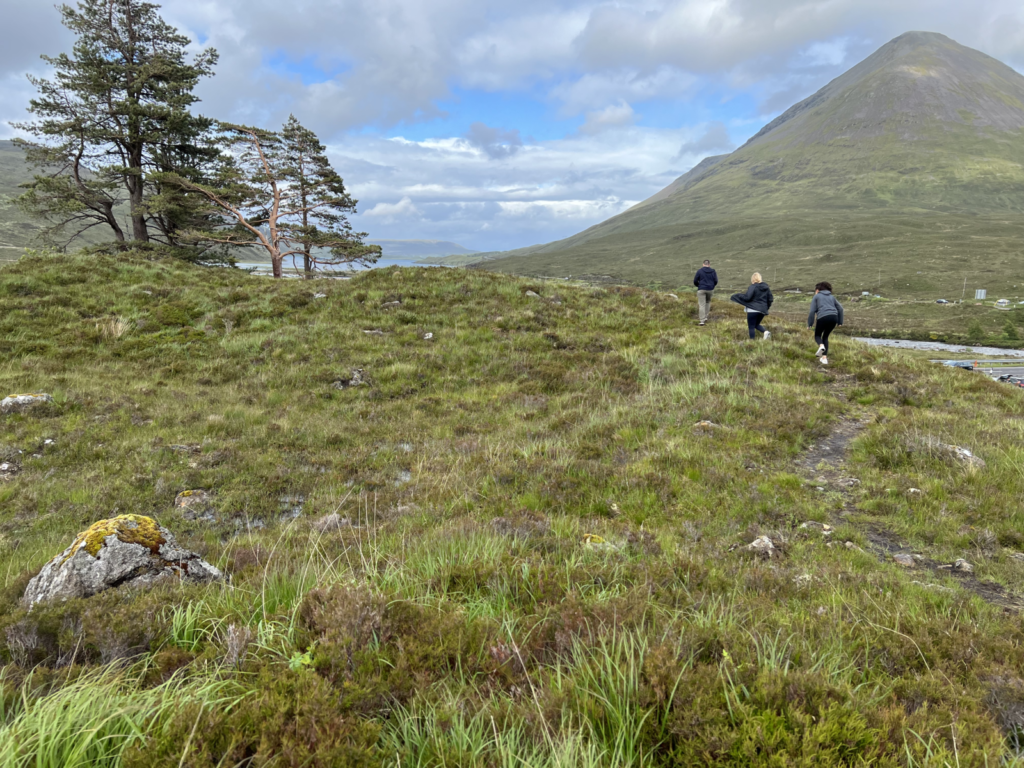
When you think of Scotland, typically the first things that come to mind are tartan-everything (hello, kilts!), hairy coos (Scottish Highlander cattle), fish and chips, haggis (Google it), blood pudding (Google this too), rain, wind, and a whole lot of scenery. Are you wrong? Absolutely not. Is there more to the Scottish way of life? Undoubtedly. Two major ones that stood out to me: education and work culture.
After spending a few days teaching at a primary school in Dumfries (located in Southwest Scotland), it was abundantly clear that education is one of the major differences between Scotland and America. Troqueer Primary School’s students were actively engaged in lessons and intensely eager to learn, smart as a whip, and unbelievably in tune to American culture and politics. And get this – not only do the students have a Physical Education class period every day, but they have two “lap runs” around the school yard every morning and afternoon…plus recess, which doubles as the adults’ teatime. This allows the kids to be kids and burn off excess energy which results in better behaved children that can focus and learn easier. This also showcases itself in classroom management style and the mentality of the teachers. Even though they were in the final stretch of their academic year, the teachers were smiling, happy, and bright-eyed. After speaking with them, they feel supported on all levels, as rested as people teaching little humans every day can be, and thankful to be educators. Their summer break is only six weeks, but they have multiple two-to-three-week breaks scattered throughout the academic year as well, which seemed to make a big difference for them. In Scotland, being a teacher is a coveted position – in fact, it is almost impossible to secure one of the highly-sought after jobs. Scotland’s education system focuses on molding the student as a whole person rather than academics alone. The curriculum includes a lot of emotional intelligence development that centers on respect and inclusivity, physical health and mental well-being, and with that, students are able to perform well academically. I’ve been stateside for almost two weeks now and I’m still digesting everything I witnessed and learned during those important few days of our trip.
We all know the feeling of burnout and the constant grind to achieve higher and higher levels of tangible success, money, and status in American culture. We tell everyone how busy we are like it is a badge of honor, or something to brag about. Going to Scotland will give you a wakeup call on this lifestyle that will give you whiplash. Essentially all shops and stores close between 5-6:30pm at the latest. They don’t open until around 9-10am…even the coffee shops. Where are they going? Home, to be with their families. Or the local pub, to be with their friends. They’re walking and hiking, taking boat out if the water is calm enough – anything to enjoy the fresh air. The Scottish people are the epitome of the saying “work to live”, rather than “living to work”. Everyone, no matter what type of job you hold, is seen as a vital part of the wheel of their community that keeps it running. Your time and workload are protected – if you receive, for example, a temporary job duty because of someone leaving, etc., then one of your other job duties are taken off your plate of responsibilities until things return to normal. A different world, right?
If that isn’t enough to sell you on Scotland, try their tattie scones (it’s like a fried mashed potato pancake). That’ll do it, for sure.
Slàinte mhath!
